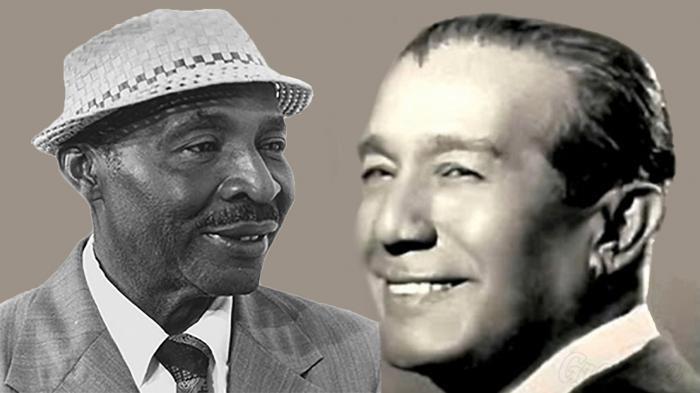
One Miguel leads to another, as we revel in and fully enjoy the Day of Cuban Son. Over the days leading to May 8, Matamoros' work resounded in the demanding anthology Juramento, a double album by the septet Ecos del Tivolí, founded in 1992 in the eastern city and committed to promoting the legacy of the author of “Son de la loma.”
The Matamoras anthology including 30 tracks, produced by Bis Music and recorded in the Siboney and Eusebio Delfín studios under the care of José Manuel García, was an international effort, with the voices of Puerto Ricans Choco Orta (in alliance with cuatrista Edwin Colón and the intrepid drums and Chinese corneta of the Conga de los Hoyos), Andy Montañez and Gilberto Santa Rosa, who led the promotional campaign with his interpretation of El que siembra su maíz (He who sows his corn), along with current exponents of the sonero movement and Cuban song like Zulema Iglesias, Mayito Rivera, El Indio Llorente, Haydée Milanés and María Victoria. Nonetheless, the Ecos del Tivolí troops shine on their own, led by director Jorge Félix Cambet, the singing of Iván Batista and José Antonio Rosabal, with the second voice of Angel Shombert.
Listening to the album explains how Matamoros emerged in Santiago and the loyalty of the city’s inhabitants to the musical genre that identifies the nation. With his genius out front and the good fortune of knowing how to insert himself in the nascent recording industry, early on, Don Miguel, in the first quarter of the last century, condensed the essences of a musical expression that had been forged through successive syntheses in the island’s eastern fields, and penetrated the popular fabric of cities in that region before reaching national status. He, like so many others, did not resist the transition from son to trova and vice versa, which is why the term trovador-sonero, rigorously conceptualized by musicologist Danilo Orozco, fits this fabulous production.
Matamoros is the composer, but also the performer, the leader of the trio that was put together in his house during a birthday party on May 8, 1925, when Rafael Cueto introduced him to Siro Rodríguez, and the group that the immense Benny Moré took to Mexico.
The Day of Son (Is the addition of “Cuban” needed?) links the birth dates of the Santiago native with another Miguel, from Pinar del Río, and should be seen as a double epiphany: The truly national scope, alive and in constant renovation of this musical genre and its inspiring capacity to penetrate and engage with other international musical expressions, starting with those in the closest environments.
Miguelito Cuní left his interpretative stamp on son, and should also be considered an exemplary trovador-sonero. There are his duets with Pablo Milanés in “Convergencia” and the songs of Marta Valdés. As Elpidio Gómez, director of the Argeliers León Center in Pinar del Río, reminds us, this province is a land of soneros: Niño Rivera, Aldo del Río, Virgilio González, Rafael López, Goyo Ríos, Carlos Quiñones.
Miguel Arcángel Conill, Miguelito Cuní, was and is a point apart. He grew up listening to the sounds of the Sexteto Habanero, and shaped his singing in the Pinar del Río groups of Fernando Sánchez and Jacobo Rubalcaba. In 1938 he made the move to Havana with Ernesto Muñoz's band and then embarked on his culminating journey through three decisive stations, including Arsenio Rodríguez and Félix Chapottin’s bands. He fit the style of these groups well, to such a degree that when you hear them, you know that no one else could do what Miguelito did. With the extension of the sonera expression and the seed planted leading to the genesis of salsa, Miguelito has been and remains the mirror in which other singers view themselves.
He is more than worthy of the honor Juan Almeida paid him upon his farewell: "This son / has not been written to be danced / it is a posthumous tribute / to the one who sang so much son / full of sonera grace / Miguel Cuní was his name".






